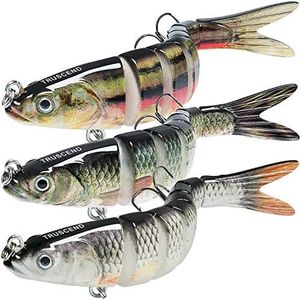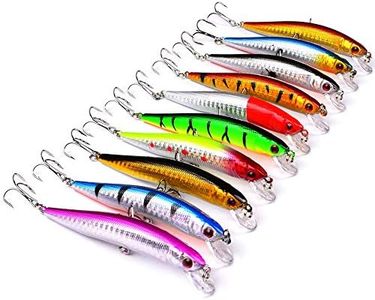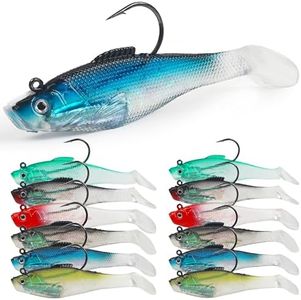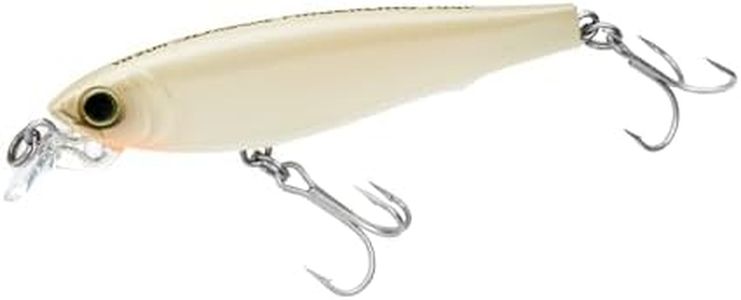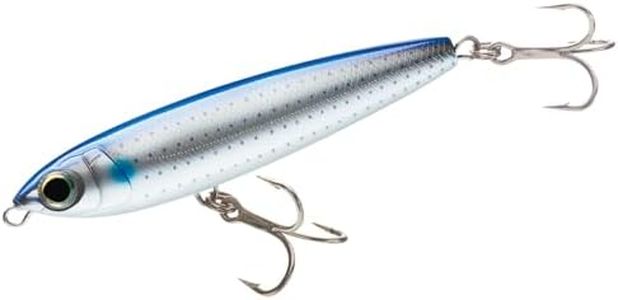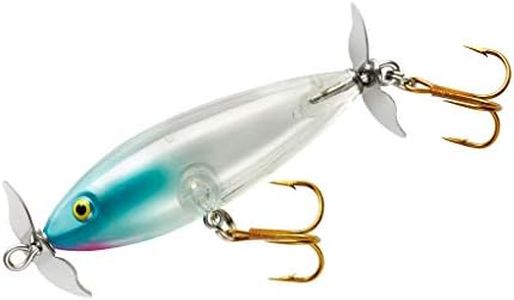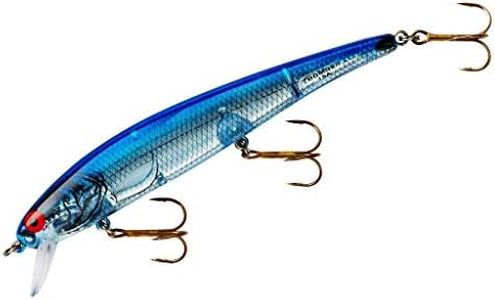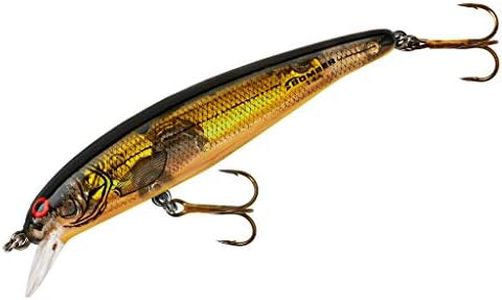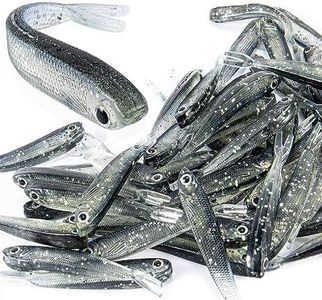We Use CookiesWe use cookies to enhance the security, performance,
functionality and for analytical and promotional activities. By continuing to browse this site you
are agreeing to our privacy policy
10 Best Striped Bass Lures
From leading brands and best sellers available on the web.Buying Guide for the Best Striped Bass Lures
When choosing striped bass lures, it's all about matching your lure to both the fishing conditions and the behavior of the fish. You want to select a lure that appeals to striped bass in your local waters, whether you're fishing freshwater or saltwater, from shore or by boat. The right lure can make all the difference in enticing these sometimes unpredictable fish to bite. It helps to understand what the fish are feeding on, their activity level, and the clarity of the water. By focusing on a few key characteristics, you can narrow down the best options and enjoy more success on your fishing trips.Lure TypeLure type refers to the general design and action of the lure, such as plugs, soft plastics, jigs, topwater lures, and spoons. Each type imitates a different kind of prey or exhibits a different movement in the water. Plugs usually mimic baitfish with realistic swimming motions, soft plastics can be rigged in many ways and are very versatile, jigs are good for bottom fishing or strong currents, topwater lures create surface commotion, and spoons flash and wobble to attract fish. Choosing the right type depends on where the striped bass are feeding—on top, in the middle, or on the bottom. Observe the fish or talk to local anglers about recent patterns to decide which style works best for your situation.
Lure SizeLure size is about both length and weight, and it determines how appealing your lure is to striped bass and how you cast or retrieve it. Smaller lures work well when the stripers are feeding on little baitfish or in calm waters, while larger lures are helpful during spring and fall when bigger bait are present or in rougher conditions. As a general guide: lures under 4 inches are best for picky or smaller fish and calm water; 4–6 inches for most general situations; and lures above 6 inches for targeting larger stripers or fishing rough seas. Matching your lure size to the prey in the area usually gives you the best chance of success.
Lure ColorLure color helps your lure stand out in the water or blend in, depending on your approach. In clear water and bright light, natural colors like silver, white, or shades that mimic local bait are effective. In murky water or low light, brighter colors such as chartreuse, yellow, or darker patterns may help the lure stand out. If you're unsure, it's always safe to start with natural shades but don't be afraid to experiment if the fish aren't biting. Watching the water clarity and light level are your best guides for picking the right color.
Action/MovementThe lure's action or movement describes how it behaves in the water and how closely it mimics wounded or lively bait. Some lures have a tight wobble or erratic darting motion, while others glide smoothly or create splashes on the surface. When stripers are aggressive, choose lures that move more erratically or make more noise. If the fish seem wary or the water is calm, subtle, natural action is usually more effective. Pay attention to how the fish are feeding—slow, steady retrieves might work one day, while quick, jerky movements are better on another.
Hook QualityThe quality and sharpness of the hooks on your lure affect your ability to successfully hook and hold onto striped bass. High-quality, sharp hooks penetrate better, especially with larger, tougher-mouthed stripers. Avoid old, rusty, or cheap hooks as they can bend or break. If you fish in saltwater, consider corrosion-resistant hooks. Always check your hooks before use, and upgrade them if necessary to maintain strong hooksets and reduce missed strikes.
